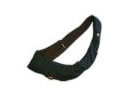'ZDNET Recommends': What exactly does it mean?
ZDNET's recommendations are based on many hours of testing, research, and comparison shopping. We gather data from the best available sources, including vendor and retailer listings as well as other relevant and independent reviews sites. And we pore over customer reviews to find out what matters to real people who already own and use the products and services we’re assessing.
When you click through from our site to a retailer and buy a product or service, we may earn affiliate commissions. This helps support our work, but does not affect what we cover or how, and it does not affect the price you pay. Neither ZDNET nor the author are compensated for these independent reviews. Indeed, we follow strict guidelines that ensure our editorial content is never influenced by advertisers.
ZDNET's editorial team writes on behalf of you, our reader. Our goal is to deliver the most accurate information and the most knowledgeable advice possible in order to help you make smarter buying decisions on tech gear and a wide array of products and services. Our editors thoroughly review and fact-check every article to ensure that our content meets the highest standards. If we have made an error or published misleading information, we will correct or clarify the article. If you see inaccuracies in our content, please report the mistake via this form.
Orange Wearaphone


Orange Wearaphone
pros and cons
- More robust than normal hands-free kits can easily be used while wearing gloves.
- Not suitable for larger people uncomfortable to wear while seated.
If you're an active kind of person, but don't want to lose touch with the world while you're biking, skiing or just out and about, the Wearaphone from Orange is a more robust alternative to standard hands-free kits. This entirely self-contained item of apparel is an active hands-free kit with an interface that consists entirely of bits of fabric.
The Wearaphone was developed by Reima, a smart clothing company based in Finland, but is being marketed -- and rebranded -- in the UK by Orange. It's compatible with many recent Nokia cellphones: we tested it with a 5210, but you don't have to be on the Orange network to use the Wearaphone.Features
The idea behind the Wearaphone is that it looks, feels and behaves more like clothing than a piece of technology. Its shape resembles a bandolier, or the strap of a cycle courier bag without the bag. It's designed to be worn over the left shoulder and under the right arm, and has a diameter of around 45cm. It weighs 146g excluding the weight of your phone. A zip-fastened pouch at the front takes your phone, and includes a clear plastic section that allows you to operate your phone's buttons if need be. The jack plug that connects your phone to the Wearaphone sits inside here.
The on-off control for the Wearaphone is a tab under the phone flap that can be fastened to two snap fasteners, one for 'on' and one for 'off'. Which one is which is embroidered on the tab. The only other control is a pull-tab by your right hand, which answers the phone or activates voice dialling on phones with that capability.
The microphone and speaker for the Wearaphone are positioned on your left shoulder. Yes, that's right, speaker. When you're using the Wearaphone, everyone within earshot will be able to hear both sides of your conversation, so if you're in a public place and you want to have a private conversation, this isn't the way to do it. The use of a speaker does mean that there's no delicate earpiece and cable to get broken or tangled by your activities. That's not to say the Wearaphone is completely impervious to damage, just that its self-contained nature makes it more robust.
The Wearaphone's electronics are in a small black box tucked away in a zipped pocket around the back. The only reason to access this box is to plug in your standard phone charger to recharge its batteries; otherwise, you can just leave it alone. Three LEDs on the box tell you how much charge remains or whether it's charging, by flashing in sequence. Orange claims around 40 hours of talk time for a full charge, and around 900 hours on standby, although this refers only to the Wearaphone and not your mobile. Unfortunately, the box's positioning means the Wearaphone is not suited to seated activities -- try sitting in a chair, and it will dig into the right-hand side of your back.
The Wearaphone has a built-in pocket for storing a limited number of lightweight items. If you only need to hold very small items (a bunch of keys or some cash, for instance), you can just open a zip on the inside of the band and pop them in. For larger stuff, you can open another zip just below this, and the pocket opens out to approximately 25cm by 30cm, giving enough room for a few CDs, a handheld or a book. However, the opened pocket hangs down around your waist, so it's not suitable for use when you're engaged in sporting activities.
Usability
The Wearaphone is simple enough to operate. You'll hear your phone's normal ring tone through the speaker when someone calls you, and pulling the tab answers the call. We could feel our Nokia 5210's vibrating function through the fabric, although this might not be the case if you're wearing something substantial like a ski jacket. If you have voice dialling on your phone, then making a call is just as simple: a longer pull on the tab triggers the voice function, and you'll get any audio feedback your phone provides via the speaker. For maximum reliability you should set up the voice dialling function through the Wearaphone if that's how you're going to use it, since its microphone will have different characteristics to the one in your phone or any other hands-free kit.
Unfortunately the Wearaphone isn't particularly comfortable, even for smaller people. A relatively bulky person could find that the lack of adjustment makes it quite tight. Nor will it be suitable for sports that require a lot of upper body movement, such as climbing, since it could prove restrictive, or could catch on some other piece of equipment. However, you could easily cycle, for instance, with the Wearaphone on.
Conclusion
We don't think the Wearaphone is suitable for everyday use -- especially commuting -- since it contains little storage of its own, and is impractical to wear while carrying a shoulder bag or rucksack. The same system built into such a bag would be far more suitable for the daily trip to work. It's an interesting concept though, and shows how technology could be integrated into other personal items in the future. There are some obvious developments that would improve the Wearaphone, such as using a Bluetooth phone connection instead of cables, and versions for other phones or handheld/phone combos should be simple enough to develop.
The Wearaphone is a great demonstration of how technology can be made to fit into our lives a little better, even if it's not yet ready for the mainstream market.